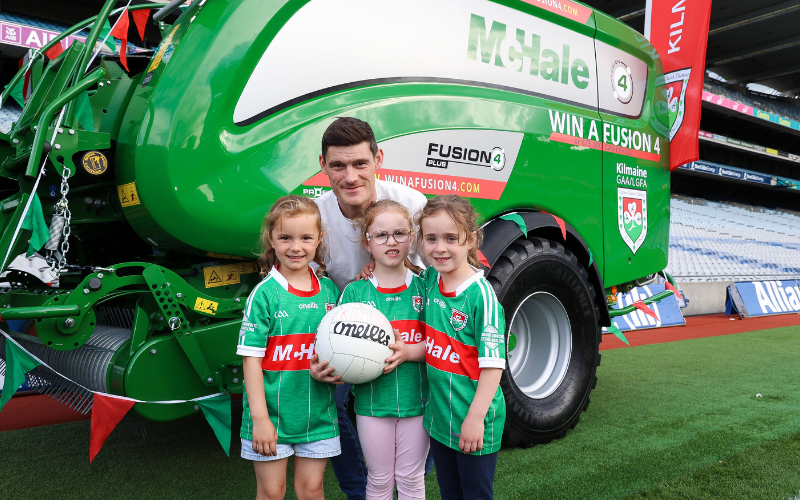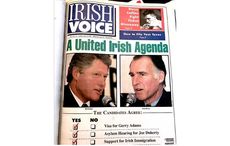There was a very amusing moment at the splendidly named Grand Hotel in Malahide on Tuesday when reality hit Martin O’Neill with the ferocity of a Richard Dunne tackle.
Sitting beside his captain for Wednesday’s friendly against Serbia, a fine young man from the county of Waterford by the name of John O’Shea, the Ireland boss was listening to the player’s words without any need for translation.
It was never so in the Giovanni Trapattoni era of course when the wonderful Manuela Spagnelli would translate every word for Trap issued by Robbie Keane or John or whoever else happened to have the skipper’s armband that week.
Martin O’Neill understands English. And when O’Shea admitted, in plain English, that he is already 33 years of age and not getting any younger, poor Martin nearly fell off his seat.
He clearly thought the Sunderland defender was younger. He even proved it by joking that he might have to immediately check Richard Keogh’s birth cert and find out how old the Derby County defender really is (27 if you happen to be interested).
The worried look on Martin’s face after the O’Shea revelation said it all. If he didn’t know before that he had inherited an aging central defense from Trapattoni, he knew it now.
The problem for O’Neill is that O’Shea, at 33, and Dunne, at 34, are the best options available to him at the core of his Irish defense. They are also aging and that, trust me, is a process that can’t be reversed.
The reality partly explains why O’Neill exclaimed some weeks ago, on these pages and many others, that he is worried by the talent coming through the underage ranks within Ireland, and he has every right to be concerned.
There is no obvious successor to John O’Shea at Sunderland, never mind with Ireland. The beaten League Cup finalists paired O’Shea with Wes Brown in Sunday’s Capitol One Cup final defeat at Manchester City and Brown’s a year older than O’Shea.
Dunne, now in the twilight of his career with another old timer in Harry Redknapp at QPR, is the same age as Brown and has yet to really feature in anything other than a conversation under O’Neill’s tutelage.
The concern on O’Neill’s face on Tuesday was, it has to be said, in stark contrast to the chirpiness of a new media-friendly Roy Keane the previous afternoon, just up the road at Gannon Park, home to Malahide United and Ireland training sessions.
With a makeover almost as dramatic as (Ryanair's) Michael O’Leary’s, Keane is keen to be heard these days since he found the perfect job as number two to O’Neill.
Dismissing the national worry about a Euro 2016 qualifying group that includes Germany, Keane almost seemed to contradict his gaffer’s assessment of Ireland’s strength in depth.
The lead in his pencil was provided by a trip to see Stoke all but end Arsenal’s Premier League title ambitions on Saturday, a game in which Irish striker Jonathon Walters scored the only goal from the penalty spot.
Keane’s argument, less than 48 hours later, was the three Irish players in the Stoke colors offer real hope to the national team – that one of them was Glenn Whelan will have pundit Eamon Dunphy reaching for the Complan!
Dunphy has never been a fan of Whelan’s and told us so every time Ireland played in the recent and failed World Cup qualifying campaign. Marc Wilson and Walters rate slightly higher on the Dunphy appreciation scale, but neither of them are what you could call 'world class.'
Which makes O’Neill’s anguished look as O’Shea’s age revelation more relevant to the future of Irish football than anything his Keaneness said on Monday.
Messrs Walters, Wilson and Whelan – the three W-ise men of Irish football – may get us by in the short term but, like O’Shea, they are not long term answers to Ireland’s problems. And that has to be a real concern for the Irish manager and his assistant going into the Euro qualifiers next autumn – whether they want to admit it or not.
They aren’t the only Irish coaches looking to replace aging class in the coming months. On Saturday, Brian O’Driscoll will take the Lansdowne Road bow for a final time as an Ireland rugby international.
With just two games left in his Six Nations career, one against Italy in Dublin and the other away to France in Paris, O'Driscoll is now living on borrowed time in the green shirt.
As he admitted on Monday, it will be an emotional occasion when he bids adieu to the home crowd on Monday and I, for one, like the idea that the whole stadium should rise to honor him in the 13th minute, a reflection of the number he has worn on his back for Ireland with such pride and grace for the past 15 years.
O’Driscoll may never be replaced in an Irish context and to ask any young player to do so is unfair in the extreme. Somebody will play in that number 13 shirt next season; somebody will step up to the plate. Like O’Shea and Dunne on the soccer roster, he will be replaced, but the question is by whom and how good will they be?
That’s going to make the next few years interesting for our football and rugby heroes. And that, like the aging process itself, is a certainty.
(Cathal Dervan is sports editor of the Irish Sun newspaper in Dublin)




Comments